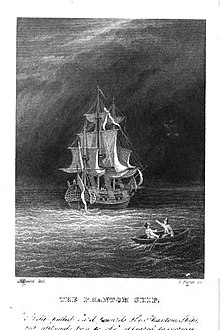
Edgar Allan Poe was an American writer, poet, author, editor, and literary critic who is best known for his poetry and short stories, particularly his tales of mystery and the macabre. He is widely regarded as a central figure of Romanticism and Gothic fiction in the United States, and of American literature. Poe was one of the country's earliest practitioners of the short story, and is considered the inventor of the detective fiction genre, as well as a significant contributor to the emerging genre of science fiction. He is the first well-known American writer to earn a living through writing alone, resulting in a financially difficult life and career.

Der fliegende Holländer, WWV 63, is a German-language opera, with libretto and music by Richard Wagner. The central theme is redemption through love. Wagner conducted the premiere at the Königliches Hoftheater Dresden in 1843.

Terneuzen is a city and municipality in the southwestern Netherlands, in the province of Zeeland, in the middle of Zeelandic Flanders. With almost 55,000 inhabitants, it is the most populous municipality of Zeeland.

Captain Frederick Marryat was a Royal Navy officer, a novelist, and an acquaintance of Charles Dickens. He is noted today as an early pioneer of nautical fiction, particularly for his semi-autobiographical novel Mr Midshipman Easy (1836). He is remembered also for his children's novel The Children of the New Forest (1847), and for a widely used system of maritime flag signalling known as Marryat's Code.
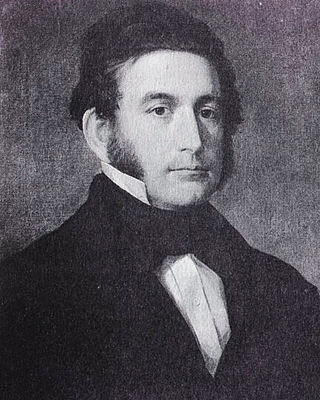
William Evans Burton was an English actor, playwright, theatre manager and publisher who relocated to the United States.
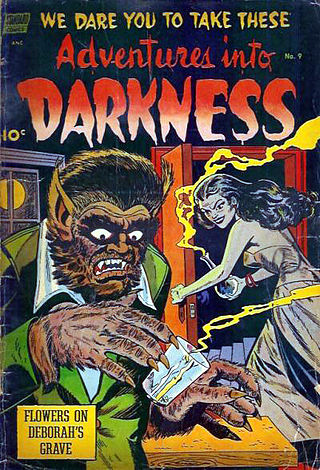
Werewolf fiction denotes the portrayal of werewolves and other shapeshifting therianthropes, in the media of literature, drama, film, games and music. Werewolf literature includes folklore, legend, saga, fairy tales, Gothic and horror fiction, fantasy fiction and poetry. Such stories may be supernatural, symbolic or allegorical. A classic American cinematic example of the theme is The Wolf Man (1941) which in later films joins with the Frankenstein Monster and Count Dracula as one of the three famous icons of modern day horror. However, werewolf fiction is an exceptionally diverse genre, with ancient folkloric roots and manifold modern re-interpretations.

"The Conqueror Worm" is a poem by Edgar Allan Poe about human mortality and the inevitability of death. It was first published separately in Graham's Magazine in 1843, but quickly became associated with Poe's short story "Ligeia" after Poe added the poem to a revised publication of the story in 1845. In the revised story, the poem is composed by the eponymous Ligeia, and taught to the narrator in the fits of her death throes.

"The Fall of the House of Usher" is a short story by American writer Edgar Allan Poe, first published in 1839 in Burton's Gentleman's Magazine, then included in the collection Tales of the Grotesque and Arabesque in 1840. The short story, a work of Gothic fiction, includes themes of madness, family, isolation, and metaphysical identities.

The Narrative of Arthur Gordon Pym of Nantucket, written in 1838, is the only complete novel by American writer Edgar Allan Poe. The work relates the tale of the young Arthur Gordon Pym, who stows away aboard a whaling ship called the Grampus. Various adventures and misadventures befall Pym, including shipwreck, mutiny, and cannibalism, before he is saved by the crew of the Jane Guy. Aboard this vessel, Pym and a sailor named Dirk Peters continue their adventures farther south. Docking on land, they encounter hostile, black-skinned natives before escaping back to the ocean. The novel ends abruptly as Pym and Peters continue toward the South Pole.

The Flying Dutchman is a legendary ghost ship, allegedly never able to make port, but doomed to sail the seven seas forever. The myths and ghost stories are likely to have originated from the 17th-century Golden Age of the Dutch East India Company (VOC) and of Dutch maritime power. The oldest known extant version of the legend dates from the late 18th century. According to the legend, if hailed by another ship, the crew of the Flying Dutchman might try to send messages to land, or to people long dead. Reported sightings in the 19th and 20th centuries claimed that the ship glowed with a ghostly light. In ocean lore, the sight of this phantom ship functions as a portent of doom. It was commonly believed that the Flying Dutchman was a seventeenth-century cargo vessel known as a fluyt.

Pandora and the Flying Dutchman is a 1951 British Technicolor romantic fantasy drama film written and directed by Albert Lewin. The screenplay is based on legend of the Flying Dutchman.
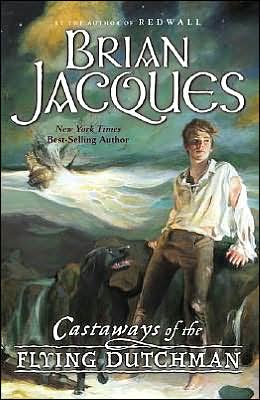
Castaways of the Flying Dutchman is the first novel in the Castaways series by Brian Jacques and was published in 2001. It is based on the legend of the cursed ship known as the Flying Dutchman. A young boy, Nebuchadnezzar, and his dog, Denmark, are the lone survivors of the Flying Dutchman, fated to wander the earth forever immortal and youthful, helping those who need aid.

The Black Pearl is a fictional ship in the Pirates of the Caribbean film series. In the screenplay, the ship is easily recognized by her distinctive black hull and sails. Captained by Captain Jack Sparrow, the Black Pearl is said to be "nigh uncatchable". In the first three films, she either overtakes or flees all other ships, including both the Interceptor, which is regarded as the fastest ship in the Caribbean, and the Flying Dutchman, which is faster than the wind. Her speed is derived from several factors such as the large number of sails she carries and being partly supernatural. As stated in Dead Man's Chest and At World's End, the Black Pearl is "the only ship that can outrun the Dutchman" and this is evidenced in the maelstrom battle between the two ships in the movies.
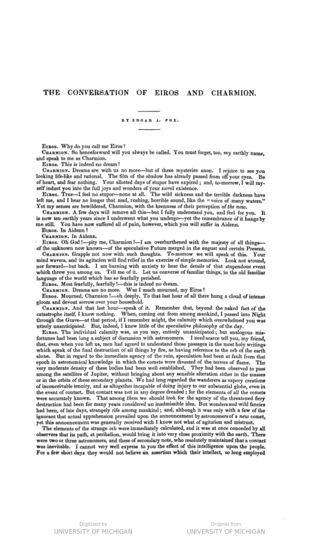
"The Conversation of Eiros and Charmion" is a short story by Edgar Allan Poe, an apocalyptic science fiction story first published in Burton's Gentleman's Magazine in December 1839.
"The Haunted Palace" is a poem by Edgar Allan Poe. The 48-line poem was first released in the April 1839 issue of Nathan Brooks' American Museum magazine. It was eventually incorporated into "The Fall of the House of Usher" as a song written by Roderick Usher.

Burton's Gentleman's Magazine and American Monthly Review, was a literary publication published in Philadelphia from 1837 to 1840. Its founder was William Evans Burton, an English-born immigrant to the United States who also managed a theatre and was a minor actor. Edgar Allan Poe was an editor and contributor in 1839–40.
"Morella" is a short story in the Gothic horror genre by 19th-century American author and critic Edgar Allan Poe.

Edgar Allan Poe has appeared in popular culture as a character in books, comics, film, and other media. Besides his works, the legend of Poe himself has fascinated people for generations. His appearances in popular culture often envision him as a sort of "mad genius" or "tormented artist", exploiting his personal struggles. Many depictions of Poe interweave elements of his life with his works, in part due to Poe's frequent use of first-person narrators, suggesting an erroneous assumption that Poe and his characters are identical.

Tales of the Grotesque and Arabesque is a collection of previously published short stories by Edgar Allan Poe, first published in 1840.

Thomas Dunn English was an American Democratic Party politician from New Jersey who represented the state's 6th congressional district in the House of Representatives from 1891 to 1895. He was also a published author and songwriter, who had a bitter feud with Edgar Allan Poe. Along with Waitman T. Barbe and Danske Dandridge, English was considered a major West Virginia poet of the mid 19th century.
